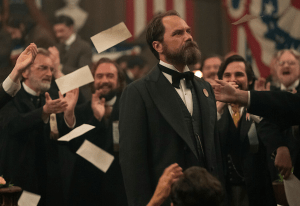Writer & Illustrator: Chynna Clugston Flores
Videos by ComicBook.com
Colorist: George Kambadais
Letterers: Bryan Lee O’Malley with Christopher Butcher
In the midst of new series being launched every month it’s easy to forget about the variety of stories that are being reprinted at Image Comics. Their mission as a publisher is not purely to support new work, but revive comics that might not have received enough attention or credit on their initial outings. Nowhere is that mission more clear than in the newly issued collections of cartoonist Chynna Clugston Flores. In addition to the newly colored volumes of her Blue Monday stories, Image Comics is re-releasing Scooter Girl, originally published by Oni Press in 2003.
The new edition of Scooter Girl is perfectly timed to land on the week of Valentine’s Day. New readers will be delighted to discover a screwball romantic comedy that could compete with the absolute best of them. It is the story of Ashton Archer, a seemingly irredeemable snob who has his life made, until he encounters Margaret Sheldon in high school. Archer is instantly taken by Sheldon who has absolutely no interest in him. Even worse he becomes a klutz and loses everything he cherishes almost overnight. Archer is forced to move to San Diego where things are seemingly going well until he sees Sheldon again after 5 years.

The cartooning in Scooter Girl is some of the best you’re likely to encounter in American comics. Some might compare the work to Scott Pilgrim or a grown version of Archie Comics, but comparisons do a disservice to the work. Like all great cartooning it is entirely itself at all times, crafting a world that is consistent and unique. Faces and fashion receive a great deal of emphasis. Lines are carefully chosen to make each character stand out with clear emotions, but maintain the seeming simplicity of design. Outfits, clubs, and scooters are all detailed enough to take on a life of their own. The mod scene of 90s San Diego feels like a real place in these pages and it’s easy to imagine emulating some character’s sense of fashion.
Scooter Girl never draws too much attention to its own style in order to avoid distracting from the story itself. Even separated into five chapters, it’s difficult to set down the volume once it is begun. Each page packs in information and jokes, all while moving the story ahead. Even a detour into the long line of successful Archer men doesn’t feel like a distraction. It builds out the world and establishes a lot of humor to come later in the story. Each tangent is so engaging that a guide on how scooters are constructed would likely be considered “whiz-bang” in the hands of this team.

The addition of color to the story is well deployed, creating not just an extra coat of paint, but a purposeful new depth to the story. In particular the clothing and places of this very fashion oriented San Diego subculture come out better with colors to define how men and women dress. It also works to accentuate the wide array of emotions and offer a better sense of place in each scene.
Scooter Girl makes the case for romance comics on the week of Valentine’s Day. Like the best romantic comedies, it doesn’t go for the easy jokes or set ups. There’s a meanness to many of the interactions and the punchlines sting. But it’s hard to stop loving even the worst characters or set down the story. With such an immersive world and with a story told with such style, it doesn’t matter what you normally like to read, Scooter Girl is worth checking out.
Grade: A-








